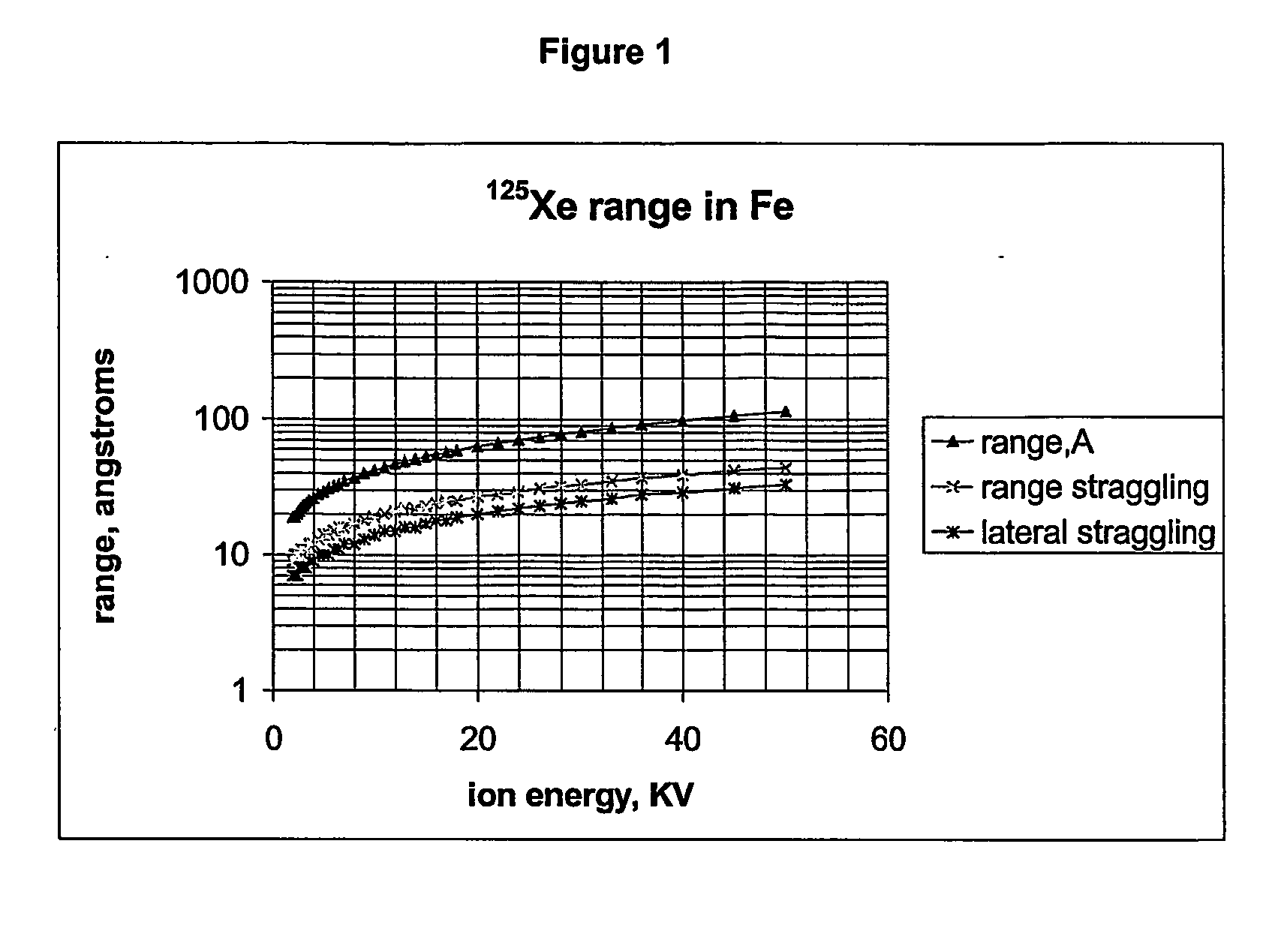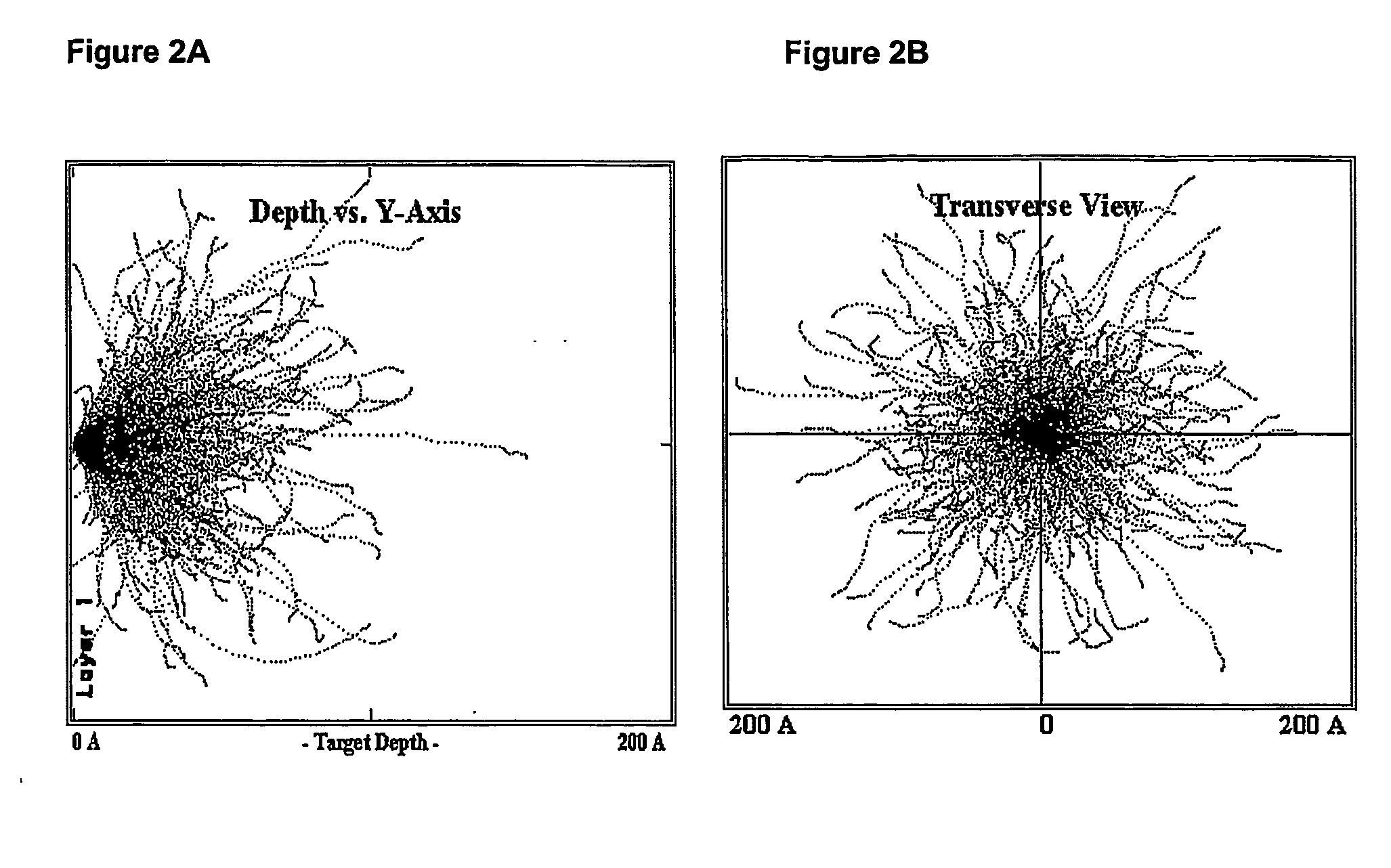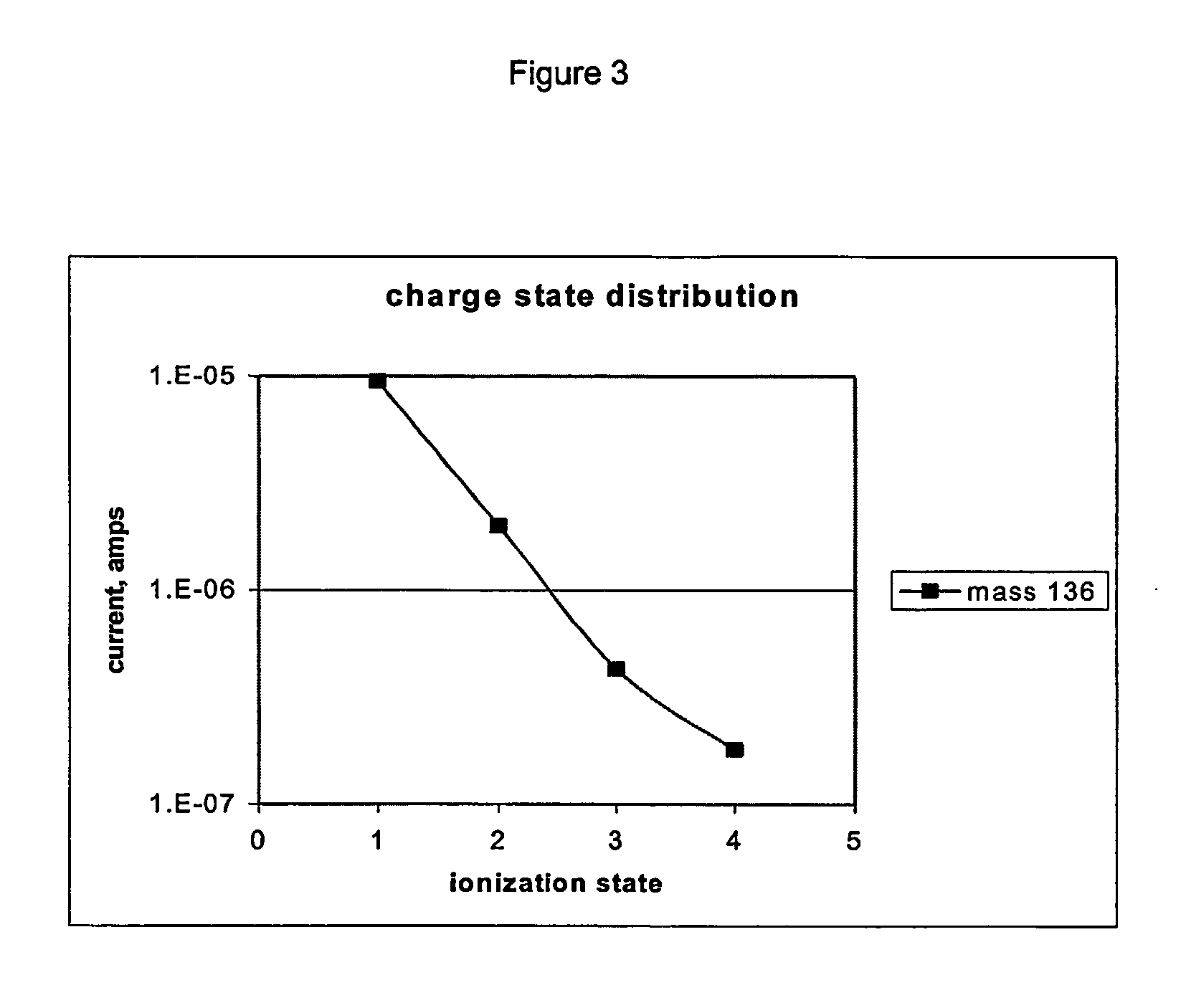Radioactive ion
- Summary
- Abstract
- Description
- Claims
- Application Information
AI Technical Summary
Benefits of technology
Problems solved by technology
Method used
Image
Examples
example 1
Radioxenon Implantation into Metal Foils
[0054] The rationale of use of the radioxenon precursor is that it is readily extracted from production targets and efficiently ionized in plasma ion sources. This Example describes two experiments. The first experiment establishes the stability of 125Xe(16.9±0.2 h), its daughter 125I (59.40±0.01 ) and 127Xe(36.4±0.1 ) in metal foils. The second experiment measures the practical system transmission for delivery of singly ionized radioxenon to target devices.
Materials and Methods:
[0055] The apparatus used for these experiments is called TISOL4 (Test Isotope Separator On-Line) at TRIUMF. It consists of a target box in the accelerator proton beam, an adjacent ionizer, a magnetic spectrometer and various beam-focusing elements. The mass resolution M / ΔM=250 is low but sufficient for this work. The target-ion source combination can be electrically biased (up to 20 kV) to provide acceleration potential for reaction products. The beam path is abou...
PUM
 Login to View More
Login to View More Abstract
Description
Claims
Application Information
 Login to View More
Login to View More - R&D
- Intellectual Property
- Life Sciences
- Materials
- Tech Scout
- Unparalleled Data Quality
- Higher Quality Content
- 60% Fewer Hallucinations
Browse by: Latest US Patents, China's latest patents, Technical Efficacy Thesaurus, Application Domain, Technology Topic, Popular Technical Reports.
© 2025 PatSnap. All rights reserved.Legal|Privacy policy|Modern Slavery Act Transparency Statement|Sitemap|About US| Contact US: help@patsnap.com



